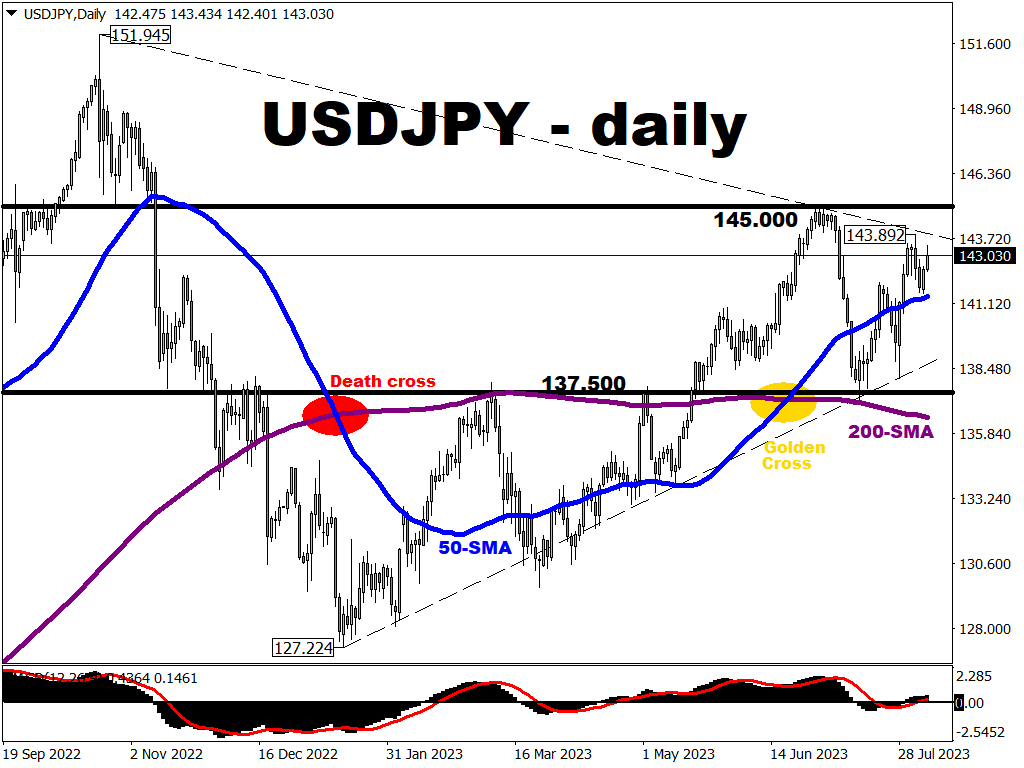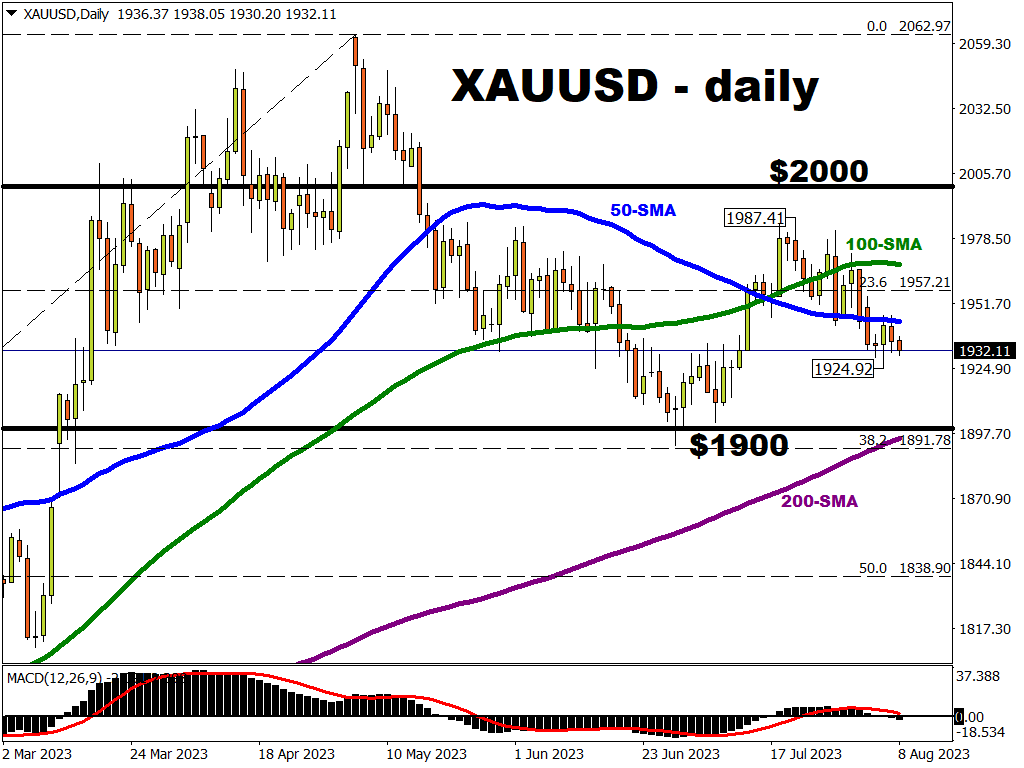- China's July external trade data came in below market estimates
- USD climbs on fears of slowdown in Chinese economy
- USDJPY bulls may try revisiting last week's high at 143.892
- Bullion bears edging back towards last week's sub-$1925 low
Global markets are cautious this morning after disappointing China trade data fell more than forecast.
Figures showed exports dropping for a third straight month in July amid a slump in global demand, while imports tanked as domestic pressures dented the recovery in the world’s second biggest economy.
The dollar has gained a small safe haven bid, the antipodean currencies are sinking, and US stock futures are in the red after Monday’s solid day of gains.
There is only second-tier data ahead of the marquee US inflation data published on Thursday.
Policymakers across the globe are currently highly data dependent which means markets are sensitive to economic data releases.
Even snippets of information on economic health can generate outsized market reactions, especially in these summer weeks where trading volumes are lighter than normal.
USD/JPY crosses 143
Last week’s US debt downgrade, coupled with the Treasury’s announcement that it will be increasing its bond issuance in the coming months, propelled US bond yields higher.
This boosted the dollar through the interest rate channel.
The greenback also attracted some safe haven flows too, as riskier assets such as stocks suffered from the spike in yields.
Moving forward, the question is whether this is the beginning of a more prolonged recovery in the US dollar, or simply a correction within the prevailing downtrend that started last year.
The sharp rise in long-dated Treasury yields has impacted USD/JPY which is hovering around 143 again.
With BoJ normalisation still looking some way off to temper bearish pressure on the yen, the major is the most exposed pair to bond market volatility. This is especially true given some signs of resilience in US stocks.
Last week’s high at 143.892 is a bull target ahead of 145 which was the previous “line in the sand” for potential Japanese FX intervention.
Initial support is around the 50-day SMA, currently at 141.39.

Gold uneventful but downbeat
Surging Treasury yields are never a good sign for gold bugs as the precious metal is a non-interest bearing asset which loses its appeal.
In effect, higher interest rates raise the opportunity cost of holding non-yielding bullion.
Gold is down for a third week in a row and nearing last week’s bottom at $1924.92.
If we lose this level, prices look likely to fall below $1920 with $1900 and the June low in focus, resting above the 38.2% Fibonacci level, with the 200-day simple moving average (SMA) also thrown into the mix to potentially offer support.

We note mixed news on the fundamental side.
Holders of bullion backed exchange traded funds have been falling and are currently at their lowest level in three years.
On the flip side, central bank buying remains strong with China’s central bank adding to its gold reserves for a ninth straight month in July.